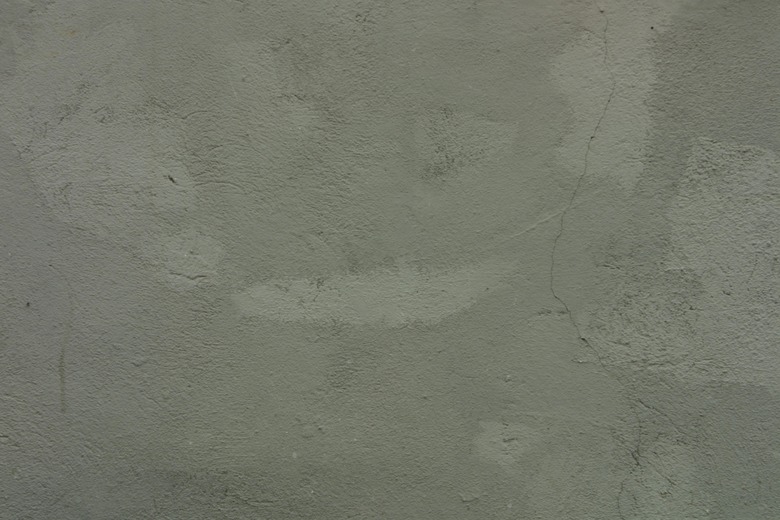What To Use To Stop Water From Seeping Up Through A Concrete Floor
The enemy of all basements is water, and deciding to finish the bottom room of your home—or frankly, any room with a concrete floor—can be risky. Moisture around your home naturally seeps through porous concrete, leaving any material in the room soggy and damaged. To stop water from seeping through your concrete floor and ruining your room, take a number of steps with a variety of products to cut off water flow.
Filling Cracks
Filling Cracks
The easiest way for water to leak through concrete is to come in through any cracks in the floor. Ignoring cracks in your concrete floor—even those as small as 1/8 inch wide—is like inviting water into your home. To seal up these cracks, use a concrete patching compound, available from hardware and home improvement stores. These materials come pre-mixed or in concrete-like form that must be mixed with water. Once the crack is clean, apply the patching compound with a putty knife or trowel and allow it to dry to create a water-resistant seal in otherwise damaged areas.
Supporting Joints
Supporting Joints
Any joints in your concrete floor also invite water to seep in, and the best way to stop water in these areas is to seal them up with exterior-grade caulk. Seal up the joints between the floor and the walls, as well as any expansion joints that were installed in your concrete floor slab to allow for shifting in the material. Because caulk is pliable, the concrete will still be able to expand if necessary, but water will not be able to seep through. Finally, seal around any fixtures that penetrate the floor, such as pipes or heaters. These gaps are also open to water seeping in.
Sealing Concrete
Sealing Concrete
Finally, you can seal up the porous surface of concrete with a silicate-based sealant product, available from hardware and home improvement stores or from masonry specialty retailers. This material, spread over the surface of the concrete with a paint roller or paintbrush, will penetrate the small holes in the concrete surface that allow water to seep through. The material will come in contact with lime in the concrete, expand and harden to fill in the surface complete. Filling in these gaps stops water from invading through the porous concrete.
What to Avoid
What to Avoid
Some homeowners think that simply painting over the concrete will stop water leaking in the area. However, paint is not waterproof and does not expand the way that silicate sealant does. Paint will stop the problem temporarily, but over time the paint will begin to crack and peel, a result of the constant moisture onslaught from below. Also, avoid simply covering the concrete with plastic underlayment; the plastic will simply trap the seeping water between the concrete and the underlayment, causing the potential for mold and mildew growth.
